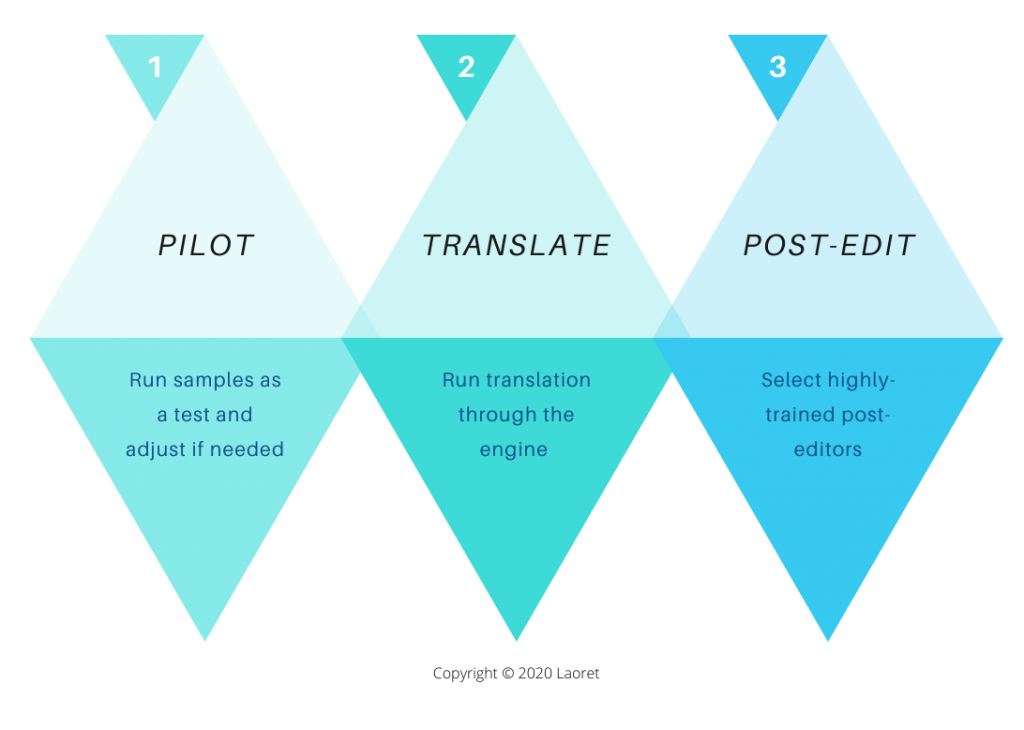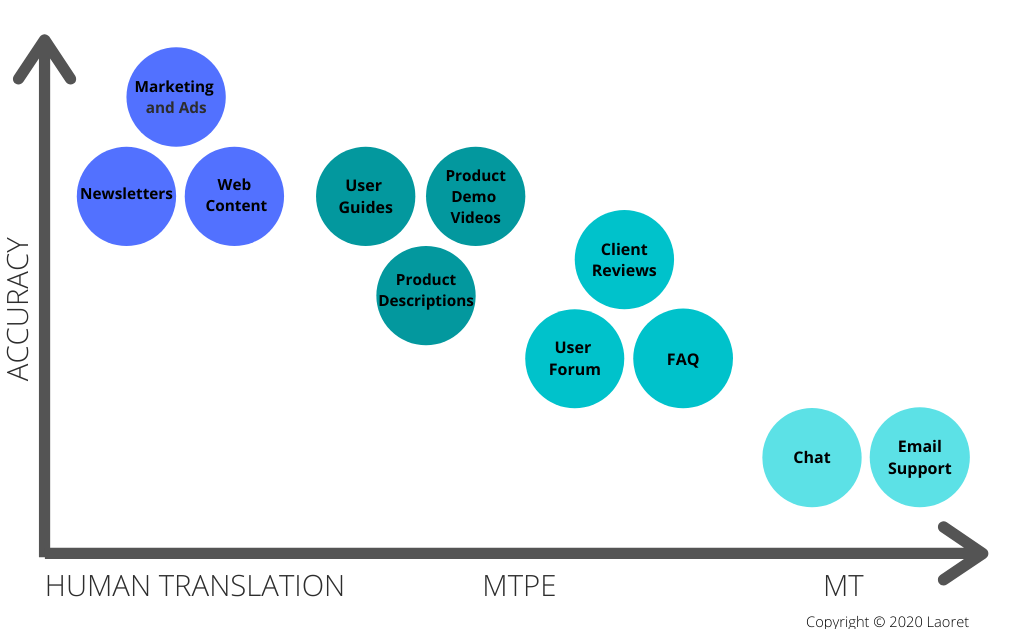The Top 3 Challenges Faced By Multilingual eCommerce Platforms
Multilingual eCommerce Platforms have the unique feature of being a cooperative system that combines the products and expertise of the platform, with feedback and recommendations by the users. With around 2 billion 1 and the demand for content in various languages is rising steadily, eCommerce Platforms are now evolving into multilingual players fitted to compete in the global market.
Given the dynamic nature of eCommerce Websites, creating an effective multilingual experience is not exactly straightforward. You may be asking yourself, how can the large bulk of User-Generated Content be followed up effectively? What about the need for continuous translations? And what happens when your Multilingual eCommerce Platform needs to be promoted in new target locales? Read on and find out more about the cost-effective and creative solutions to each of these challenges, by combining partial automation with the expertise of specialized linguists.
Challenge #1: How To Handle User-Generated Content (UGC) And Product Descriptions
Depending on how many products you have available in your online store and how frequently you update in general, translating product descriptions is the most essential and important aspect you should look at and closely handle effectively. To be more specific, you will have to:
1- Plan sufficiently ahead so you are ready to handle the bulk of content and information coming your way!
2- Make sure the content is properly localized with the relevant information and terminology tailored to your target audience. For this, Human Translation and Review will always be the measure for quality and user engagement.
3- Select the right tool to easily & continuously export product descriptions for translation and import them back to your CMS (Content Management System) i.e PrestaShop, Magento, or WordPress. We have covered this point in detail in the continuous localization section below!
4- Make sure the product descriptions are optimized for search engines and your keywords are localized following the best practices of International SEO.
5- If you have to translate entire catalogs for some products and it is not in your budget yet, you may think about offering a smaller selection for your target regions. However, the first real challenges will occur when your product offerings grow, or if you would like to expand to a new market(s). Read on and learn more about how to prepare!
Multilingual eCommerce Platforms have their own unique translation challenges. You may be wondering which service you should use for the marketing content? And what about the User-Generated Content? Or the Product Descriptions? Have a look at our 3-part video about the 3 main eCommerce Translation Challenges and how to overcome them! Just press play and every video will play automatically!
Is Machine Translation A Good Option For Multilingual eCommerce Platforms?
You have probably heard that Machines are getting smarter and that some of the most prolific eCommerce Platforms are making consistent use of Machine Translation (MT) Engines to help keep up with the flow of UGC and Product Descriptions. eBay, for example, is very open about their use of MT and has written reports on how a smart application of MT can boost productivity, save time and translation costs. And for the major players in eCommerce pout there,, it has proven to be an invaluable tool.
But of course, smart is the operative word here. When it comes to MT, the Post-Editing Process is still an essential part of the Quality Assurance of your translation, and a valuable tool in promoting global user engagement.
So, what exactly is Machine Translation Post-Editing (MTPE)? MTPE refers to the process of combining the speed of the machine (MT), with the intuition of a human translator through post-editing (PE). Sounds ideal, right? But it needs to be said that only when the best practices are followed, can MTPE really become a valuable and profitable service. It involves a lot of testing, training, and meticulously selecting translators familiar with MT and the Post-Editing Process.

Pro Tip! Want to know more about the best practices of MTPE? Have a look at our blog about MTPE Best Practices from start to finish.
UGC Translation Challenges: Why Post-Editing (aka the Human Touch!) Matters
Let’s think about the state of mind of a client sharing a product review.
- They will be emotional and want to share their personal experiences with your product.
- They are openly talking to fellow buyers as if recommending a product to a friend.
- Last but certainly not least, they are not going to take a lot of time to post the review.
Now, here are some specific challenges that this state of mind creates:
- Slang and idioms: The informal state of mind and the desire to share something personal will invite many users to use phrases such as piece of cake. A German user reading a literal translation of this expression as provided by an Engine, will probably just sit there scratching their head.
- Context: Engines are becoming more and more aware of context, but they are not there yet. Image a review that says, This is one sharp looking axe!. No, this is not a review written by a lumberjack, but by a musician using specific slang for the word guitar. The guitar is not actually sharp, but it looks great. Even more, he is not implying there is one of these guitars, nor is the guitar actually looking at something. So, even this one, very short sentence, has numerous translation challenges.
- Typos: Users are likely shooting out a quick review on their phone, so typos are bound to sneak in. MT Engines will need to be trained specifically in handling misspellings, which will not only take time, but errors will still slip through when not seen by the Engine before.
To summarize how you could potentially manage complete localization solutions for your multilingual platform, take a look at the graph below!

Pro Tip! Check out our blog on How Best To Utilize Machine Translation & Machine Translation Post Editing For Your eCommerce Platform including tips on how to make your content Machine Translation ready and when your content could benefit from this service!
Challenge #2: How To Manage Continuous Translations With Multilingual eCommerce Content
Like we have touched upon in the previous section, human translations have become stronger and more efficient thanks to the use of specific tools and translation technologies that help streamline the workflow. And since a large portion of your Multilingual eCommerce Platform will have to be translated continuously, it is not just up to MT-Engines to come to the rescue. As more features are added, more original content is optimized and products or promotional offers are made available, the translation process will need to be streamlined.
Managing Continuous Translation is not as complicated as it used to be. Well-equipped LSPs make use of a Translation Management System (TMS) and Translation (CAT) tools that help increase both productivity and accuracy by implementing partial automation.
What does this process actually include? Let us give you a quick overview:
- The translatable content is extracted, and the translation reinserted, without creating any systematic issues.
- A TMS also includes a Translation Memory (TM), which means that a log is created of frequently used terminology and industry-specific jargon. This way, the same translations are applied to the correct words, and you save a whole lot of money since only the newly translated content gets charged.
- The TMS connects the entire translation and localization team, ensuring optimal communication and constant connection between different departments and processes
Challenge #3: How To Create Effective Marketing Messages Through Multilingual Content
Let’s go from MT and partial automation to 100% made by humans!
Marketing content needs more than a basic translation. It is the type of content that is uniquely designed to speak to your target locale. That means that it becomes less important to be loyal to the words used in the source languages, and more important to focus on what type of message would truly connect with your audience. And this is where Transcreation comes in. Transcreation combines translation and creation and adds targeted marketing insights to translated content.
Let’s get a little more specific. Email Marketing, for example, still holds tremendous value in eCommerce marketing strategies. It can be automated, segmented by the buyer’s journey stage or interest, and the magic is ready to happen.
But while the process of sending out emails itself can be automated, the content deserves a little more TLC. Even though e-mail marketing is one of the oldest strategies in the digital marketing book, it is still a crucial way through which you can build and maintain trust with your leads. So, developing content not only geared towards interests and buyer stages but also locales, adds that extra punch of cultural potency that can strengthen the trust between you and your user.
But even when just developing client relations, transcreation plays a role. Think about marketing campaigns involving slogans, texts, or even Social Media. For example, imagine you are using local marketing techniques and utilize tracking cookies to determine the location of your prospects. How much greater is your chance to get those new customers if they were to receive a discount offer that speaks to them personally?
Pro Tip! Read our blog on Transcreation and how it is best managed! We have included a Creative Brief with everything you should consider sharing with your LSP in order to get the best possible results in the shortest possible Turnaround Time.
Frequently Asked Questions
Do you have some questions left unanswered or are you curious to learn more? Have a look at our FAQ section based on our client feedback! Remember that we remain available 24/7 for any other inquiries you may have about your next eCommerce Translation Project.
Conclusion:
Multilingual eCommerce Platforms pose some unique challenges that can effectively be overcome when linguistic tools and trained professionals are brought together in a streamlined workflow that follows the best practices and ensures Quality Assurance on every level.
At Laoret, we eagerly invest in the most innovative tools on the market, and only select tech-savvy, native, in-country professionals with years of experience in the eCommerce industry. Our 24/7 online availability, positions us to efficiently process any ad hoc requests while guaranteeing an accurate delivery both linguistically and culturally.






